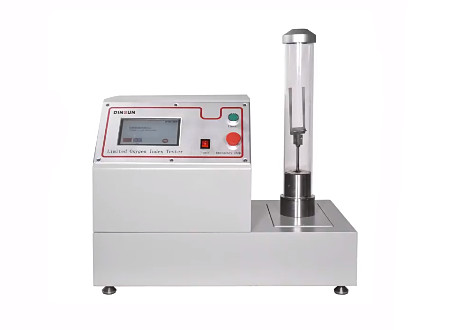-
ISO4589 Digital Oxygen Index Tester Suitable for Burning Performance Test
Edited by:Read:ISO 4589 is an international standard that specifies methods for evaluating the combustion properties of materials, including numerical oxygen index (LOI) testing. The digital Oxygen Index Tester in ISO 4589 is a commonly used test device to measure the oxygen concentration required by a material under specific conditions to support the sustainment of combustion.
The numerical oxygen index (LOI) refers to the minimum oxygen concentration required by a material to sustain combustion under specific conditions. The digital Oxygen Index Tester operates in accordance with the ISO 4589 standard requirements and generally consists of a closed test box and control system. During the test, the sample is first placed in the test box and burned on one side. Then, by controlling the oxygen supply, gradually reduce the oxygen concentration and observe whether the material can continue to burn.

Based on the test results, the numerical oxygen index (LOI) of the material can be determined. A high LOI value indicates that the material requires a higher oxygen concentration to sustain combustion, while a low LOI value indicates that the material can continue to burn at lower oxygen concentrations. LOI values are usually expressed as a percentage, for example, a material with an LOI value of 30% means that it requires at least 30% oxygen concentration to sustain combustion.
The results of the ISO 4589 digital Oxygen Index Tester can be used to assess the combustion behavior of materials and determine their suitability for specific applications, especially in areas involving fire safety and fire protection measures. This tester is used in a wide range of applications, including construction materials, electronic equipment, automotive parts, and more, to help ensure that materials comply with relevant safety standards and regulatory requirements.
- 2024-04-19Paper ring compression strength tester standards
- 2024-04-19Cupping tester standards
- 2024-04-19Rubber and plastic tensile tester standards
- 2024-04-19Taber 1750 wear-resistant tester standards
- 2024-04-19Stone Chip Resistance Gravelometer standards
- 2024-04-18Diaper absorption speed tester standards
- 2024-04-18Diaper leakage tester technical indicators
- 2024-04-18Paint film impact resistance tester standards
- 2024-04-18Low temperature brittleness tester principle
- 2024-04-18Battery separator permeability tester technical indicators



